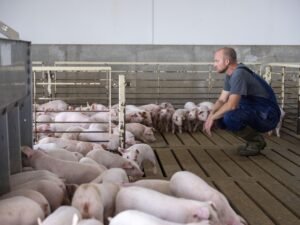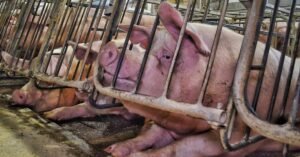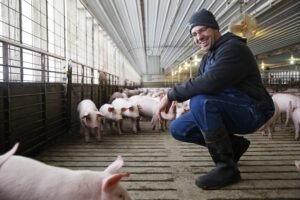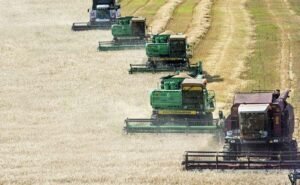The American pork industry finds itself in a precarious dance with its once-reliable Chinese partner. Last week’s cancellation of 12,300 metric tons of U.S. pork marks the largest withdrawal since May 2020, sending reverberations through agricultural markets. This swift retreat from purchasing commitments has left producers scrambling to relocate product originally destined for Chinese consumers.
Chinese-American agricultural relations have weathered numerous storms over recent years. But the present tension carries distinctive undertones. Analysts suggest this represents more than temporary market adjustment—rather, it signals China’s deliberate pivot away from American agricultural dependency. The timing feels conspicuous, arriving amid escalating trade hostilities between the two economic titans.
U.S. pig farmers, though not exclusively tethered to Chinese demand, will certainly feel the pinch. The red-state agricultural heartland appears specifically targeted in what Dexter Roberts from the Atlantic Council describes as “a targeted response from China to hurt parts of the [US] that are red”. Republican-leaning farm states that supported Trump in the last election now confront potential financial fallout. As Roberts grimly notes, “One bad year and you might be mortgaging the farm”.
The Chinese government, in fact, doubled down on this approach when on March 4, 2025, the Ministry of Finance State Council Tariff Commission announced retaliatory tariffs against American agricultural products, with pork specifically facing a 10% tariff. This additional cost burden creates substantial headwinds for U.S. exporters attempting to maintain market share against competitors.
Shifting Production Dynamics
China’s domestic pork industry has undergone significant transformation. Despite experiencing a slight production decline in 2024 due to disease outbreaks and financial challenges for producers, Rabobank’s global animal protein outlook anticipates production growth in 2025. This projection stands somewhat at odds with their expectation that prices will simultaneously fall below 2024 levels while remaining above breakeven.
Large Chinese producers have focused intensely on efficiency rather than expansion. They’ve maintained stable herds while aggressively culling unproductive sows. This strategic approach has contributed to a sow herd recovery to 40.6 million head by October 2024—representing a 1.7% increase from Q1 2024 lows but still lagging 4.2% behind 2023 figures for the same period.
Production costs saw a remarkable decline through 2024 compared to previous years. Lower input costs combined with enhanced disease prevention measures have substantially elevated productivity. Meanwhile, market consolidation continues its relentless march as small-scale producers abandon sow production in favor of shorter-term activities like fattening.
Global Trade Realignment
The once-robust U.S.-China pork trade corridor now gives way to alternative supply routes. Spain claimed the position of largest pork supplier to China during 2024’s first three quarters, though Brazil slightly outpaced Spain in 2023 volumes. China’s overall pork imports declined dramatically by 31% in 2024 due to weakened market demand, with USDA forecasting similar import levels (1,300 thousand MT CWE) for 2025.
Within this shifting landscape lurks another complication—China’s anti-dumping investigation into European Union pork exports remains unresolved. Should China impose additional tariffs on EU pork, global import patterns could face further disruption. This creates a complex chess game where multiple major exporters maneuver for position in a contracting Chinese market.
Chinese importers have expressed mounting concerns over supply chain reliability, with some actively pursuing diversification strategies to reduce dependence on traditional partners. This strategic realignment occurs against the backdrop of China’s relatively stable export performance, with marginal growth projected for 2025 as it continues serving established markets like Hong Kong and Japan.
The overall trajectory suggests a fundamental rebalancing of global pork trade flows. While U.S. producers had anticipated continued exports to China, growing evidence indicates a need for substantial market redirection. Mexico emerges as a potential growth market for American producers seeking to offset Chinese losses. Though the transition won’t happen overnight, the writing appears clearly on the wall.
American pork producers now face urgent strategic decisions. The cancellation of 12,000 tons represents both immediate logistical pressure and a harbinger of structural change. Those who adeptly navigate this transition by diversifying export markets and enhancing production efficiency will likely weather the storm. Others may find themselves caught in an increasingly untenable position between rising production costs and contracting global opportunities.






